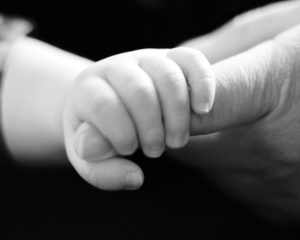This week, another skeleton class, as the dreaded lurgy tightened its grip, squeezing our precious group to the bone; I must admit, I was in two minds about coming in myself, but feeling the commitment to the course had to remain, no matter how crappy I was feeling on the inside, dragged myself in. During check in, other members of the group reported feeling a bit angry and resentful of the fact that, despite their own hardships, they had made it in to the session, whereas the others hadn’t managed to make it their priority. I acknowledged this, and certainly empathised – but was quite aware that actually, that was not how I felt in this situation. Me; I felt proud of myself for having made it in, despite feeling like a sack of dung. Maybe I was in an introverted place, and that is why they were so self-centred, but it did not stop me acknowledging, empathising, and – I think – affirming to the others that it was okay to feel angry. I suppose, with our knowledge of defence mechanisms, I just knew and understood that their feelings of anger directed outwards, were most probably displaced, and were more about their own frustration at themselves and their own personal struggles with how demanding they are finding the course.
The day was focussed on ‘self’ – more searching back into our own pasts, trying to make sense of our lives – in keeping with these last weeks of studying the psychodynamic approach. On this day, we were given a quote from Michael Jacobs, a leading contemporary psychoanalyst, as a springboard for own reflection;
“Part of therapeutic work involves finding expressive language (image, metaphors, narratives, statements, outbursts, drawings, songs, movement etc) for aspects of the impact we have on each other, and aspects of the impact life has on us”
This quote was a revelation for me, in terms of understanding how modern psychodynamic therapy has evolved from the early days of a silent therapist, sitting behind a couch. This emphasises a connection (a continuation of the ideas of Winnicott, Fairbairn and most recently, Hobson) between the therapist and the client – that recognition of our mutual cultural touchstones will strengthen the therapeutic relationship further, building further trust and understanding. In my mind, this fixes the eternal issue for me, when looking at the work of Freud, Jung and the like – the fact that a much clearer picture of the client’s psyche will inevitably emerge, if a strong, trusting, warm relationship is built. The divide that I always perceived between psychodynamic and humanistic approaches is now well and truly broken. One can use psychodynamic theory in a more humanistic way, and reap the benefits of both approaches. Using the past as meat for the dialogue, but engaging with the client in a way that is parallel to that that Carl Rogers defined through his core conditions; Bingo!
To bring the power of this idea home to us, we listened to a piece of music by Shostakovich together, and reported back to each other how it made us feel; what it made us think about. There were many similarities – some said that it made them feel excited and optimistic, think of royalty, grandness. Of course, there were many differences as well in our reactions – after all we are individuals with our own perceptions and frames of reference. But I surmised more similarities. We felt connected by them, just as counsellor and client can, when mutuality is established; a bond created. Knowing that the core theory I am training in is humanistic, I do believe that the connection between counsellor and client is key, the most important element of the relationship. Without this, how could any client could trust the counsellor with their inner most thoughts, feelings, dreams and fears – I know I couldn’t. (Very ‘humanistic’ of me? No! I can be psychodynamic and think this way too! Ha-Ha! Michael Jacobs says so…)
The next few hours were spent looking back on key figures in each of our lives who have had impact on us – not just people, but culture too – films, tv, brands, art, songs, and how they have shaped us. We took a long time to think about this alone, and a long time sharing our thoughts together. The strengthening impact on our group as a result, was HUGE. The level of connection and understanding that sharing of personal reference can achieve really is staggering. Our entire lunch hour was spent reminiscing about mutual songs, films and tv shows we have loved, describing what they mean to us. As a team building exercise, it had a phenomenal effect, but even more than that; it reinforced the importance of an affinity between the counsellor and client, and how culture can be used to express so much, how we all emote through it and personalise it. (I am reminded of my many years of making ‘mix tapes’ in a bid to try to let the recipient know how I was feeling, and equally, the amount of mix tapes I received, in turn)
After such an emotional and powerful morning, combined with my general ‘dung like’ feeling that I have already described, it seemed ok in the afternoon skills session for me to take a step back from baring my own soul. I found myself in a session where my client wanted to talk, no – NEEDED to talk about issues she was having with her marriage, and how her growing self-awareness was impacting on that – an issue close to my own heart in many ways, having been in that position myself. I felt the value of my level of understanding, and responded accordingly, by stepping back from taking my turn to be a ‘talker’ (client) and giving her the whole duration – a double session effectively. She needed it, and I needed to feel the affirmation that I was useful to her too. I enjoyed the separation of her feelings from my own, despite the similarity of her situation to my experiences. To be honest, my own experiences were completely disconnected from what was going on between us as client and counsellor in the room, it was really only afterwards, on reflection of the session that I even thought about them. Whilst I was with her, in the session, I was focussed on the here and now of what she was saying, HER here and now, and mine was only in relation to her and what she was telling me. During this long, powerful session, I briefly found myself in a moment where the gestalt ‘empty chair’ technique seemed appropriate to use, but, unsatisfyingly, on trying it, found it did not sit well with the feel of our session – although my approach is definitely humanistic; honest and even a little confrontational (in a gentle way, I hope), I don’t think that I enjoyed the feeling of using that technique. Oh well, lesson learned. The session was good, other than that. – I think I pulled it back!
Which takes me to the end of the day; a short debrief and an early finish. For such a short time, we did a huge amount of work – well, I know I did, and I know that I achieved a huge amount of learning…
Related articles
- Psychological Perspectives (dranilj1.wordpress.com)

